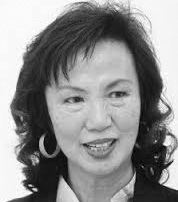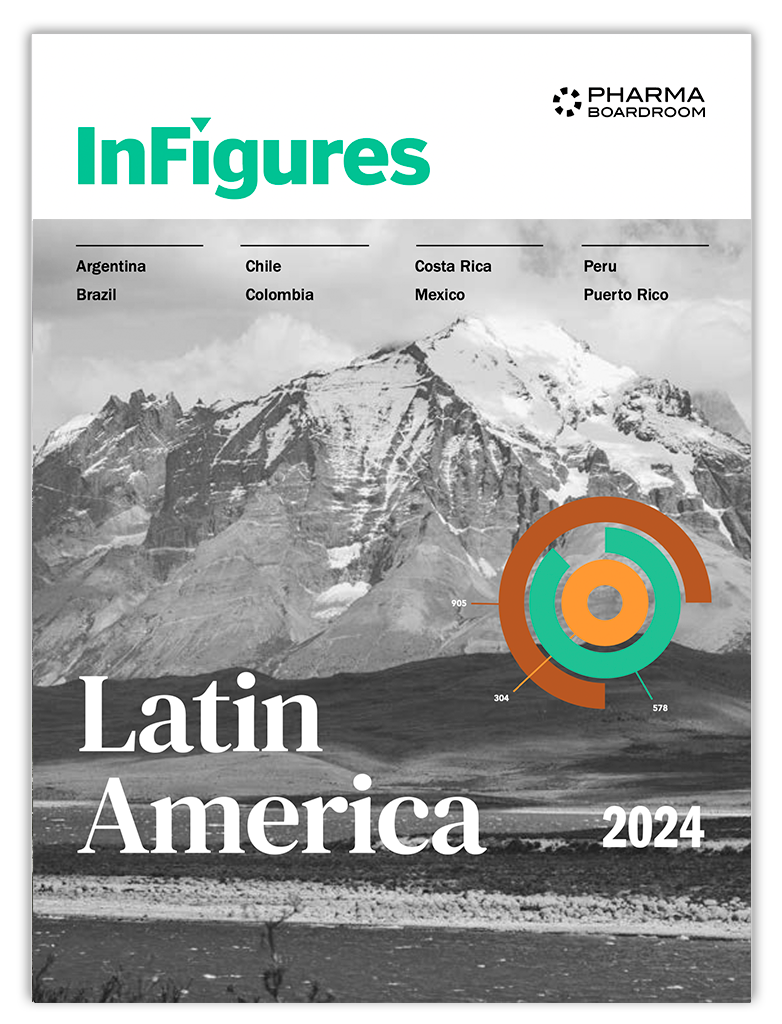The society started at the beginning of the 20th century with the combination of the Penang Pharmaceutical Association and the Straits Pharmaceutical Association. Have there been significant shifts in the society’s objectives and what are its priorities today?
For a long time, pharmacy has been a non subject. There was a fundamental misunderstanding about the profession and the word “pharmacy” spelt Farmasi in Malay was frequently misunderstood that the profession was that of farmers! However, over time, people started to understand the role of pharmacists and realized our contributions to healthcare and the extent of our abilities in many areas such as science, nutrition, research, and in promoting a healthy lifestyle.
Malaysia is undergoing an important transformation in its healthcare system. Our beloved Prime Minister has created the idea of “One Malaysia”, therefore our Minister of Health is pushing through a “One Care for One Malaysia” plan. As far as MPS is concerned, we are willing to mobilize all our resources to help this initiative, to make sure that people get value for money and that the man on the street has access to quality healthcare in Malaysia.
In an interview we conducted with Mr Leonard Shatar, President of MOPI, he said one of the key growth factors for the domestic market has been the increasing professionalism of healthcare in Malaysia. MPS offers professional development, various achievement awards and an online training module. What is the real impact of these initiatives in raising standards in healthcare and is this a factor in expanding the Malaysian market?
The Ministry of Health (MOH) has become highly conscious of the role that the MPS is playing. In order to further healthcare awareness among the Malaysian population, MPS carried out a “Know Your Pharmacist” campaign, in line with MOH’s programme of increasing public awareness. Another of our campaigns was: ‘Medicine Cabinet Clean-Up’. Under this scheme, the patients could bring their entire stock of medicines and we would then explain more about how to use the right medicine, right dose and the right time, and which right instructions to follow depending on their illness. MPS’s programme of raising public awareness about pharmacists has proven successful and this is evident in recognition received by MPS from the Ministry of Health. When the government identifies the key players in the industry, pharmacists are now put at the forefront. Malaysian pharmacists are now capable of playing a significant role. One recent development in gaining recognition has been the acquisition of two new buildings for the society. This new infrastructure will be a showcase of what pharmacists can achieve.
There is a wide spectrum of pharmacist roles. People tend to forget that pharmacists are scientists first and foremost. Indeed, their training and education have almost always been scientifically orientated. In this respect, MPS wants to promote the need of research and development (R&D) in order to raise the standards of healthcare in Malaysia. To achieve so, the People of the country really have to start “thinking outside the box”. This is what our networking programmes aim to achieve. We want pharmacists to come together and unite. Unity and mutual respect among pharmacists are necessary if we want to be heard in Malaysia and abroad.
With an expanding middle-class able to spend more on medicines, the only barrier to growth is the continuing lack of public awareness about pharmaceuticals. In your opinion, what is left to achieve in order to raise public awareness?
The Malaysian pharmaceutical companies now need to communicate more about their activities in order to show their commitment to promote a healthy lifestyle. Nevertheless, the communication must be done in the right way. In my opinion, the preventive actions and self-medication should be promoted. It represents a way of cutting the healthcare budget by reducing the number of people falling ill for we believe “Prevention is better than Cure”.
The National Medicine Policy, endorsed by PM Najib with his 1Care for 1Malaysia policy, aims to make healthcare affordable and accessible to all. What is the current level of medical coverage of the pharmaceutical industry today in reaching the general population?
The public sector has done very well in terms of increasing access to medicines. In general, many developing countries are now able to bring quality and cost-effective care to the ordinary citizen. On the other hand, the private sector has also proven highly efficient. Therefore, it is important to keep the current balance between pharmacists employed by the public sector and those employed by the private sector. 51% of pharmacists are government-employed, whereas 49% are private. Both the private and public sectors are strong. The government provides good exposure for public pharmacists, sets up conferences and offers great business opportunities; the private sector offers a guarantee of high-quality. By maintaining a balance, pharmacists are increasingly in the frontline to drive progress forward.
The Ministry of Health is engaged in a continuous struggle to deal with diabetes and dengue fever. As the head of MPS, what are the major pharmaceutical priorities in Malaysia?
To fight diseases, fifteen institutions are today in place in Malaysia to provide training and degree programmes. Pharmacists do not have to leave the country anymore to receive a high-level education; they can get it here in Malaysia. We are now at a ratio of one pharmacist to three thousand people and hope to reach the World Health Organisation (WHO) target of one pharmacist to two thousand people in time.
There needs to be more pharmacists in the private sector to meet this objective. However, it should be noted that the Economic Transformation Programme (ETP) of Malaysia is supposed to be private sector driven. So the pharmacists of the private sector have to be made more aware that their work will drive growth in the economy. In this regard, there is still a shortage of pharmacists in the private sector.
The government is pushing for medical tourism as an expanding industry aiming to increase the number of ‘medical tourists’ by 20% from 2009’s figure of 336,000. How will this alter the balance between professionals working in the public and private sectors?
If the conditions of regulation remain the same, we will remain in a situation where the private sector is not well enough represented. In my opinion, before Malaysia pushes for health tourism, it needs to be slightly more established to deal with the requirements of the domestic market. Once Malaysia has reinforced the domestic pharmaceutical private sector, it can start to plan to make the country a bastion of healthcare offering sufficient funds, nutritional programmes, health supplements, etc. to attract medical tourists.
One of the ways the Health Minister, Dato Seri Liow, wishes to promote medical tourism is a relaxation of the 1956 advertising laws for the pharmaceutical industry. What is your position on this, to what extent have these regulations held back the pharmaceutical industry in Malaysia and what will be the impact of this liberalisation?
The motivating factors behind increasing medical tourism are legitimate and it seems logical to advertise in that respect. This said, although we can increase awareness through advertising, Malaysia’s pharmacists should be services-driven rather than marketing-driven. For this reason I am not comfortable with the scenario at the moment. I do not think we need to go for an aggressive promotional campaign for pharmacy service. In fact, our services should speak for themselves. The Malaysian pharmaceutical industry does not need to blow its own trumpet through advertising.
However, MPS will have its own publication to attract people in the pharmacy service. Together with the Malaysian pharmaceutical services division under the Ministry of Health MPS wants to make sure that its members are accredited. The aim is to increase the level of quality in Pharmacy Practice in order to meet high standards.
PM Najib highlighted the need to move the pharmaceutical industry to more upstream production. To what extent are local companies pursuing more innovator products and will this generate increasing competition with the MNCs?
I have a very high regard for the generic producers, because they are highly regulated, manufacturing factories need to meet the Good Manufacturing Practices (GMP) standards in order to operate. Malaysia is a country well recognised abroad for its level of quality standards. Of course, multinational companies (MNCs) have strong evidence-based premium drugs, but I believe there is definitely a place for local distributors in Malaysia. In addition, there is growing confidence in local production which is protected by ten years patent protections.
Another dynamic is the predominance of traditional and herbal medicines over allopathic drugs. To what extent is this changing with higher-income consumers? Are changes in the dynamic caused by economic or cultural concerns on the part of consumers?
The Malaysian population includes Malays, Chinese and Indians amongst others. For centuries, these cultures have used traditional medicines as their main source of medical care. This will not change over a couple of years. Therefore, there is still a place for these medicines and some of these medicines are doing very well. Of course, they have to be evidence-based. Malaysia benefits from its huge bio diversity, which is a strong basis for a competitive herbal medicine industry. Malaysia’s rainforest is abundant with the sources of herbal medicine. The country could therefore be conducting a lot more research than it presently does given the level of resources at its disposal. R&D is essential to success in this area. Secondly, Malaysia needs to develop its skills in commercialisation when it comes to marketing its products. Thirdly, Malaysia has a good opportunity to develop ‘halal’ pharmaceutical products. The country has real success stories in terms of ‘halal’ certifications. There are a lot of countries which place their trust in Malaysian halal products, which means there is a huge potential for Malaysian manufacturers to establish a ‘halal trademark’.
Given the huge changes in the pharmaceutical industries and in the market at the moment in Malaysia, what would be your final message on behalf of MPS to the industry players and to the government?
I wish to address first my message to MPS members. Pharmacists are today trusted everywhere in Malaysia and the MPS benefits from a good brand image thanks to the amazing work of its members. I want to thank them and congratulate them; they make the society proud and contribute to its strong reputation. The pharmacists of MPS frequently receive awards for entrepreneurship and for services provided to the Malaysian population.
As for the Government, it has recognised MPS by engaging it in many of the programmes destined for the population. MPS is grateful to have an opportunity to be an equal partner with other active players and contributors to a better healthcare system.
Lastly, my message is addressed to the Malaysian pharmaceutical industry. Given the constraints of operating in a small market, there is a real need for expansion. There is potentially a significant export market in the Middle East and across all of South East Asia. Many of the industry players are already reaching out to other countries through exports and the industry has not yet reached its maximum capacity in terms of production.
Malaysia is a land of opportunities; we are really excited about the road ahead of us. We are willing and ready to move forward.







